*Alberto Lluch
The cradle of Western medicine
Kolebka medycyny Zachodu
Institut Kaplan for Surgery of the Hand and Upper Extremity, Barcelona, Spain
Streszczenie
Narodzin medycyny zachodniej można upatrywać w kulturze Greków i Rzymian, początkowo w postaciach mitologicznych, takich jak bóg Asklepios, a następnie w starożytnych lekarzach, jak Hipokrates czy Galen. Medycyna starożytnych Rzymian głęboko czerpała z tradycji greckiej, bazując bardziej na naturalistycznej obserwacji niż na duchowych rytuałach. Rozprawy Galena przetrwały dłużej niż inne medyczne pisma z okresu antyku. Jego teorie zdominowały medycynę świata zachodniego i miały na nią wpływ przez ponad 1300 lat. Doprowadziło to do szerzenia się greckich hipotez medycznych w całym Cesarstwie Rzymskim, które stanowiło znaczną część świata zachodniego. Większość obecnie stosowanych terminów medycznych pochodzi z greki, ponieważ właśnie Greków uznaje się za prekursorów racjonalnej myśli medycznej w złotym wieku greckiej cywilizacji. Uczniowie Hipokratesa jako pierwsi opisali choroby na podstawie obserwacji, a nazwy nadane przez nich wielu jednostkom chorobowym są nadal stosowane w dzisiejszej medycynie. Z drugiej strony większość terminów anatomicznych pochodzi z łaciny (Nomina Anatomica), a to za sprawą opublikowanych w roku 1543 drukowanych opisów i ilustracji z sekcji zwłok ludzi w pracy zatytułowanej „De humani corporis fabrica” („Traktat o budowie ciała ludzkiego”) autorstwa Andreasa Vesaliusa.
Summary
The origins of Western Medicine can be found through the Greeks and the Romans, originally with Mythological figures represented by the god Asclepius, and later by Greek doctors such as Hippocrates and Galen. Roman medicine was highly influenced by the Greek medical tradition, relying more on naturalistic observations rather than on spiritual rituals. The writings of Galen survived more than other medical scriptures in antiquity. His theories dominated and influenced Western medical science for more than 1,300 years. This acceptance led to the spread of Greek medical theories throughout the Roman Empire, and thus a large portion of the West. Most of the actual medical terms are of Greek origin, as they were the founders of rational medicine in the golden age of Greek civilization. The Hippocrates were the first to describe diseases based on observation, and the names given by them to many conditions are still used today. On the other hand, most anatomical terms are in Latin (Nomina Anatomica), explained by the printed descriptions and illustrations of human dissections published in 1543 in the seminal work “De humani corporis fabrica” (“The Fabric of the Human Body”) by Andreas Vesalius.

Ancient Egypt
Documentary and artefactual evidence of early medicine in Egypt antedates the age of Hippocrates (circa 400 b.C.) by more than a millennium, and it has been difficult to study after analyzing medical papyri, tablets and carvings on limestone walls (1). Therefore, it has been widely accepted that the Greeks were the ancestors of modern medicine, symbolically represented by calling Hippocrates the father of medicine.
The civilizations that grew around the Nile River, into what is now considered Egypt, believed that diseases were secondary to bad spirits which entered the body through the mouth, the nose or the ears, and later destroyed the vital organs of the victim. Healing of people was undertaken by three types of physicians (2). Some doctors tried to cure with external and internal potions or remedies, obtained from plants or animals. In the second group were the surgeons, who mainly treated wounds and other traumatic lesions such as fractures or joint dislocations. They never opened an abdomen, but drained abscesses and removed foreign bodies. They also performed circumcisions, mainly as a hygienic measure. A circumcision is the first surgical technique to be depicted on a wall carving, over 4.000 years old, located in a Dynasty VI tomb. Mummification was a religious custom in Egypt, and doctors inevitably profited from the techniques of the embalmers who had devised special instruments to remove the brain trough the nostrils and the viscera from the chest and abdomen. This enabled them to become familiar with the relationship and interdependence of the various organs, and only the heart and kidneys were left inside their cavities. They designed and manufactured scalpels, knives, forceps, probes and red hot irons for cauterization. In the third group, were the doctors who tried to heal or mitigate pain by means of divine aid, who were considered as exorcists, sorcerers, witch doctors, priest physicians or healers, forcing the demons to abandon the body of the patient, usually praying to the gods with the help of amulets and spells.
Egyptian doctors also recognized the procreative relationships between penis, testicles, semen and pregnancy. Semen was seen as originating in the spinal cord, as priests who made sacrifices, thought that the phallus of the bull was an extension of the spine. They thought that the semen was protected by a large bone, made from the fusion of four or five vertebrae at the end of the spinal column, which could have given rise to this bone traditional name in Latin: the os sacrum or “sacred bone”.
Greek mythology
In Greek mythology and religion, Asclepius was the God of Medicine. He was the son of the god Apollo, also the god of health, and a mortal woman named Coronis. She was killed for being unfaithful to Apollo, and was laid out on a funeral pyre to be consumed, but the unborn child was rescued from her womb. He received his name as a result of his birth, when his mother had to have her womb cut open in order for him to be birthed, now known as a cesarean section. Asclepius means “to cut open” (fig. 1).
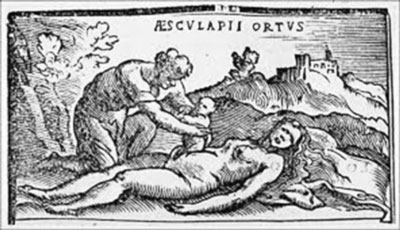
Fig. 1. Asclepius was born after cutting open the womb of his mother Coronis. A technique known today as Cesarean section
Apollo carried his son to a centaur called Chiron, and asked him to teach the child about the art of medicine. A centaur is a mythological creature with the upper body of a human and the lower body of a horse. Although a centaur, Chiron’s physical appearance often differs somewhat from other centaurs. In traditional Greek representations of Chiron his front legs are human, rather than equine; this is in contrast to the traditional representation of centaurs, which have the entire lower body of a horse.
It is said that in return for some kindness rendered by Asclepius, a snake licked Asclepius’s ears clean and taught him secret knowledge. To the Greeks, snakes were sacred beings of wisdom, healing, and resurrection. Asclepius bore a rod wreathed with a snake, which became associated with healing (fig. 2). A species of non venomous Mediterranean serpent, the Aesculapian snake (Zamenis longissimus), is named for the god. His daughter Hygeia was the Greek goddess of health, hygiene, cleanliness and sanitation. Her symbol is a bowl or chalice with a snake twined around its stem and poised above it, which later became the symbol for pharmacists (fig. 3). His daughter Panacea was the goddess of universal remedy. Panacea was said to have poultice or potion with which she healed the sick (fig. 4). This brought about the concept of the panacea in medicine, a substance meant to cure all diseases.
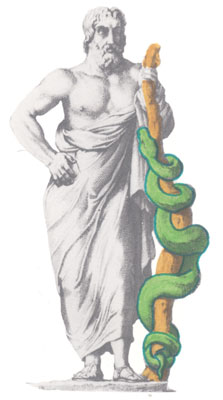
Fig. 2. Asclepius is represented with a rod wreathed with a snake, which become associated with healing
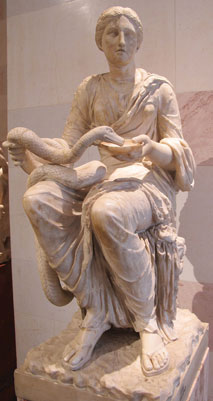
Fig. 3. Hygeia was one of the daughters of Asclepius, and her symbol is bowl or chalice with a snake poised above it
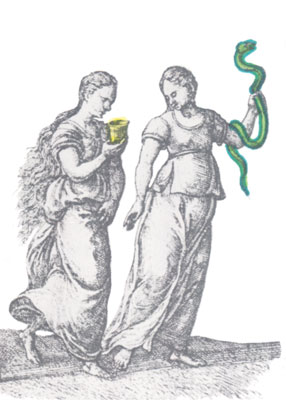
Fig. 4. The two daughters of Asclepius: Hygea and Panacea. Panacea carries a poultice or potion with which she healed the sick
As mentioned before, the symbol of Asclepius was a rod or shaft wreathed with a snake (fig. 5), often mistakenly confused with the caduceus, which is the traditional symbol of Hermes. Hermes was as a messenger of the gods; an intercessor between mortals and the divine and for this reason was portrayed as the god of commerce. The caduceus features two snakes winding around an often winged staff (fig. 6). The caduceus of Hermes is often mistakenly used as a symbol of medicine instead of the rod of Asclepius. This usage is erroneously popularized, largely as a result of the adoption of the caduceus as its insignia by the U.S. Army Medical Corps in 1902 (3). In Roman mythology, Hermes was replaced by Mercury. From the beginning, Mercury had essentially the same aspect as Hermes, wearing winged shoes (talaria) and a winged hat (petasos), and carrying the caduceus, a herald’s staff with two entwined snakes that was Apollo’s gift to Hermes (fig. 7).
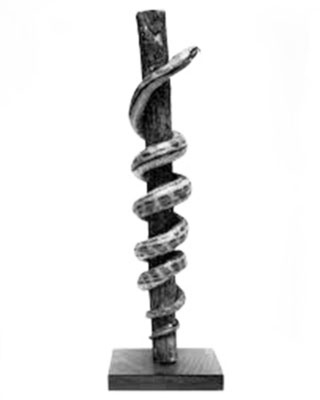
Fig. 5. The symbol of Asclepius is a rod or shaft wreathed with a snake
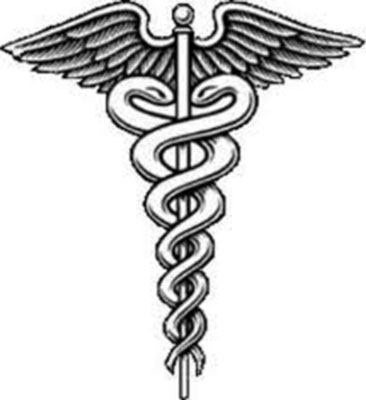
Fig. 6. The caduceus is the traditional symbol of Hermes and Mercury, featuring two snakes winding around a winged staff
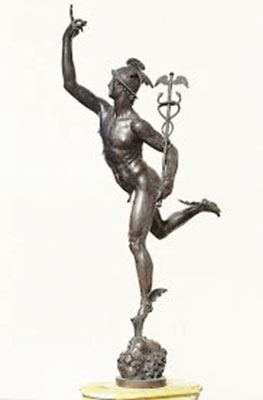
Fig. 7. Hermes and Mercury were winged shoes and hat, and carried a caduceus, which was Apollo’s gift to Hermes
From the fifth century b.C. onwards, the cult of Asclepius grew very popular and several healing temples were built. Pilgrims flocked to these temples, called asclepeia, to be cured of their ills. Ritual purification would be followed by offerings or sacrifices to the god. Some healing temples also used sacred dogs to lick the wounds of sick petitioners. In honor of Asclepius, a particular type of non-venomous snake was often used in healing rituals, slithering around freely on the floor in dormitories where the sick and injured slept. The most famous temple of Asclepius was at Epidaurus, in northeastern Peloponnese, dating from the fourth century b.C. Another famous healing temple, asclepieion, was built approximately a century later on the island of Kos, where Hippocrates, the legendary “father of medicine”, may have begun his career. The original Hippocratic Oath began with the invocation: “I swear by Apollo the Healer and by Asclepius and by Hygeia and Panacea and by all the gods and goddesses, making them my witnesses that I will carry out, according to my ability and judgment, this oath and this indenture” (4). Scholars widely believe that Hippocrates or one of his students wrote the oath between the 5th and 3rd centuries b.C.
Hippocrates
Powyżej zamieściliśmy fragment artykułu, do którego możesz uzyskać pełny dostęp.
Mam kod dostępu
- Aby uzyskać płatny dostęp do pełnej treści powyższego artykułu albo wszystkich artykułów (w zależności od wybranej opcji), należy wprowadzić kod.
- Wprowadzając kod, akceptują Państwo treść Regulaminu oraz potwierdzają zapoznanie się z nim.
- Aby kupić kod proszę skorzystać z jednej z poniższych opcji.
Opcja #1
24 zł
Wybieram
- dostęp do tego artykułu
- dostęp na 7 dni
uzyskany kod musi być wprowadzony na stronie artykułu, do którego został wykupiony
Opcja #2
59 zł
Wybieram
- dostęp do tego i pozostałych ponad 7000 artykułów
- dostęp na 30 dni
- najpopularniejsza opcja
Opcja #3
119 zł
Wybieram
- dostęp do tego i pozostałych ponad 7000 artykułów
- dostęp na 90 dni
- oszczędzasz 28 zł
Piśmiennictwo
1. Sutcliffe J, Duin N: A history of medicine. Morgan Samuel editions, London 1992.
2. Ebers G: Papyros Ebers. Das Hermetische Buch uber die Arzneimittel der Alten Agypter in Hieratischer Schrift. W. Engelman, Leipzig 1875.
3. Garrison FH: The Use of the Caduceus in the Insignia of the Army Medical Officer. Bull Med Lib Assoc 1919-20; IX: 13-16.
4. Markel H: “I swear by Apollo” – On taking the Hippocratic Oath. N Engl J Med 2004; 350: 2026-2029.
5. Garrison FH: History of Medicine. W.B. Saunders Company, Philadelphia 1966.
6. Garcia-Ballester L: Galen and Galenism. Ashgate-Variorum, Burlington 2002: 1640.
7. Vesalius A: De Humani Corporis Fabrica Libri Septem. Translation of the 1543 and 1555 editions. S Karger AG, Basel 2014.







